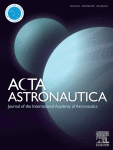Bone loss was one of the highest risk factors leading to health problems during long spaceflight for astronauts, and it was closely related to the bone mechanical properties, which led to bone fracture risk [1,2].
For a long time, bone mineral density (BMD) has been considered to depict bone quality and the most common clinical method of estimating fracture risk [3]. Plenty of studies has been reported that BMD was closely related to elastic modulus and compressive yield strength, suggesting bone mineral component was somehow connected with bone mechanical properties [4,5]. In fact, the mineral phase determined the ability to resist deformation [6], while organic phase determined the toughness of bone [7]. Also, despite the decrease of BMD, a well-organized collagen network of bone still can sustain the bone strength [8]. The poor collagen fibers organization was associated with the reduced strength of bone in SAMP6 osteoporotic mice [9].. From very young to mature bone in porcine, due to the bone different loads and its adaption ability accordingly, the collagen fiber became more organized [10]. The bone collagen fiber with longitudinal orientation had better ability to resist both elastic and plastic deformation [11], while with oblique orientation had better ductility [12]. These suggested the orientation of collagen fibers has a close correlation with bone mechanical properties. Therefore, the collagen as bone organic phase, its orientation plays an important role in the mechanical properties of bone.
What’s more, collagen was the major component in myofascia as well. Myofascia, surrounding the muscle and fusing with the tendon to connect the muscle to the bone [13], had strong tensile strength, viscoelasticity and creep ability [14]. Previous study showed that in rat hindlimb disuse model, the disordered orientation of collagen in intramuscular connective tissue was related to the deterioration of mechanical properties of immobilized skeletal muscle [15]. Longitudinal collagen fiber had higher stiffness and mainly prevented excessive elongation or contraction of myofiber; while transverse collagen fiber connected with adjacent muscle fiber to transmit mechanical stimulation [16]. This suggested collagen orientation in myofascia was also important for its mechanical properties.
Many studies have shown that the bone mechanical properties were closely related to the force acted by muscle on bone [13], and about 30–40% of the force from muscle to bone was transmitted through myofascia [14,17]. It was found old rats had a higher hardness of myofascia compared with young rats, with a poorer ability to transmit muscle force to bone [18]. Hence the myofascia may play a crucial role in the force transmission of bone.
Our previous experiment (pending published) showed that 21 days of reloading recovery after the 21-day tail suspension, although the BMD and muscle tension was completely restored, but the mechanical properties of myofascia and bone were not restored. This suggested mineral component may not be the most crucial factor for bone mechanical property [8], and the force transmission may be disrupted under mimcrogravity and/or disuse. However, as the other essential component in both bone and myofascia, whether and how the collagen changed under unloading were not clarified yet. What’s more, how the myofascia changes were related to bone deteriaration under unloading was not known yet. We seek to determine whether disordered collagen orientation in myofascia play a significant role induced deterioration of mechanical properties of bone under the assumption that microgravity causes disordered collagen in myofascia, thus leading to pathological force transmission from muscle to bone, and consequently resulting in deteriorated bone formation.
Therefore, our research is purposed to examine the changes of bone/myofascial collagen fiber orientation and their mechanical properties under simulated microgravity, analyze the correlations of bone/myofascial mechanical properties with collagen orientation respectively, and further investigate the relationship between myofascia and bone mechanical properties.





Add Comment